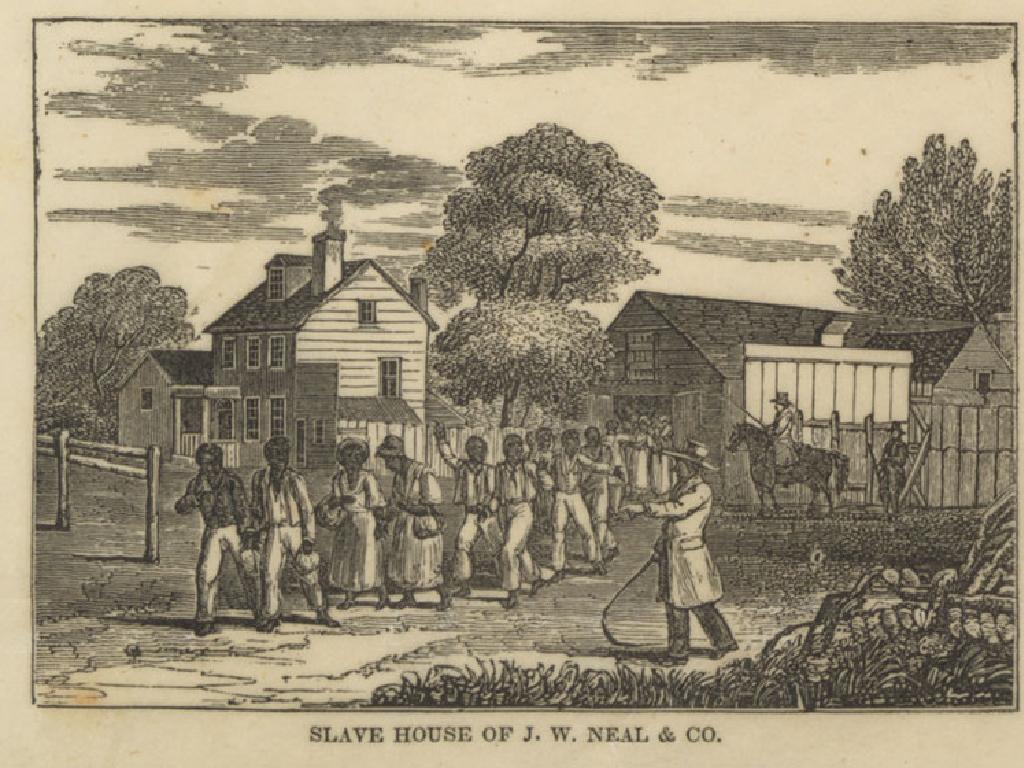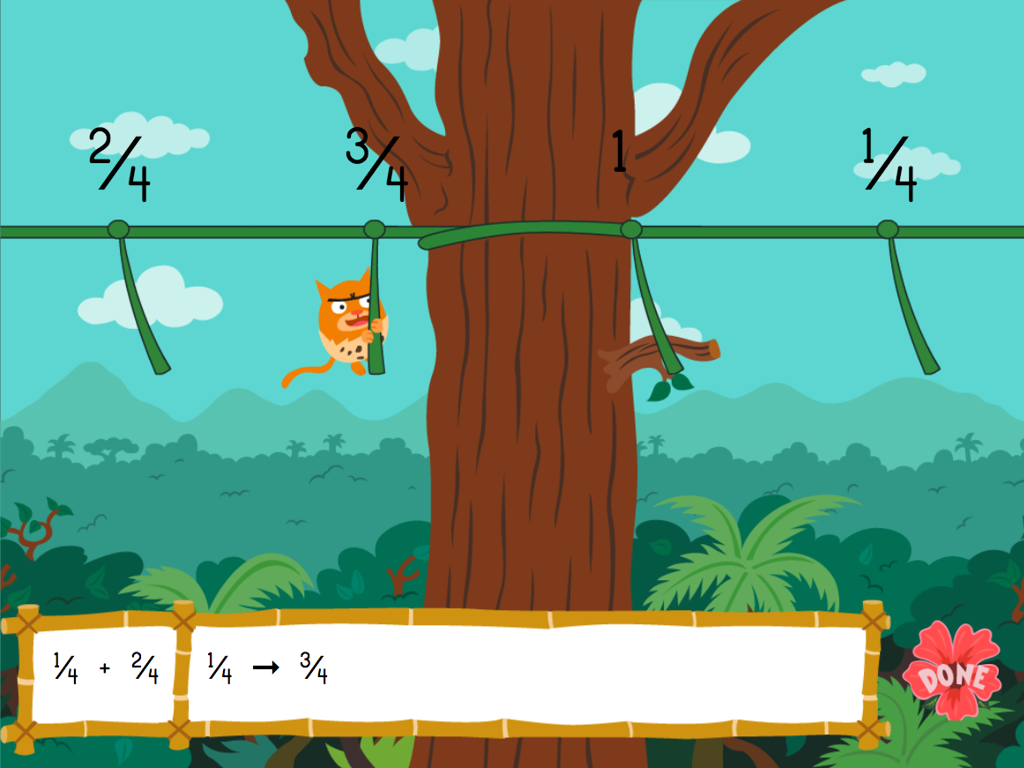Area Of Quadrilaterals
Subject: Math
Grade: Sixth grade
Topic: Perimeter And Area
Please LOG IN to download the presentation. Access is available to registered users only.
View More Content
Exploring Area of Quadrilaterals
– Perimeter vs. Area: What’s the difference?
– Perimeter is the boundary length; area measures the space inside.
– Recap: Calculating Perimeter
– Add up all sides for perimeter. Remember units!
– Introduction to Area concept
– Area is the amount of space inside a 2D shape, measured in square units.
– Area of Quadrilaterals
|
Begin the lesson by differentiating between perimeter and area, ensuring students understand that perimeter refers to the length around a shape while area measures the space within. Recap the concept of perimeter by revisiting how to calculate it, which is simply adding the lengths of all sides of a shape. Introduce the concept of area as the amount of ‘flat’ space inside a two-dimensional shape, which is measured in square units. Then, transition to focusing on quadrilaterals, explaining that different types of quadrilaterals have different formulas for area. Provide examples of quadrilaterals such as squares, rectangles, and parallelograms, and demonstrate how to calculate their area. Encourage students to think about where they might see quadrilaterals in real life and how understanding area is useful.
Exploring Area of Quadrilaterals
– Area defined
– Area is the space inside a 2D shape
– Area contrasted with perimeter
– Perimeter is the boundary length; area is the space within
– Units used for area
– Common units: square meters (m²), square centimeters (cm²)
– Calculating area for quadrilaterals
– For rectangles, area = length × width; for other quadrilaterals, methods vary
|
This slide introduces the concept of area as it pertains to quadrilaterals, providing a foundation for understanding how to calculate the space within various shapes. Begin with the definition of area, ensuring students can differentiate between the space inside a shape versus the length of its boundary (perimeter). Discuss the units of measurement for area, emphasizing the use of squared units. Conclude by explaining that while the area of a rectangle is found by multiplying length by width, other quadrilaterals may require different approaches. Provide examples and encourage students to visualize by drawing shapes and labeling dimensions.
Calculating the Area of Rectangles
– Area formula for rectangles
– Area = Length x Width (A = l x w)
– Example: 5m by 3m rectangle
– To find area, multiply 5m (length) by 3m (width)
– Practice: 7m by 4m rectangle
– Use the formula to find the area of a rectangle with sides 7m and 4m
|
This slide introduces the concept of finding the area of rectangles, a fundamental skill in understanding geometry. Start by explaining the formula for the area of a rectangle, which is the product of its length and width. Provide a clear example by calculating the area of a rectangle with dimensions 5 meters by 3 meters. Then, present a practice problem for the students to solve on their own, using a rectangle with dimensions 7 meters by 4 meters. Encourage students to work through the problem step-by-step and to check their work. This exercise will help solidify their understanding of the area calculation for rectangles and prepare them for more complex quadrilaterals.
Area of Squares
– Area formula for squares
– Area = Side x Side, where all sides are equal
– Example: 4m side square
– To find area: 4m x 4m = 16m^2
– Practice: 6m side square
– Try calculating: 6m x 6m = ?
|
This slide introduces the concept of finding the area of squares to the students. Start by explaining the formula for the area of a square, emphasizing that all sides of a square are equal in length. Provide an example by calculating the area of a square with 4-meter sides, which equals 16 square meters. Then, present a practice problem for the students to solve on their own, asking them to calculate the area of a square with 6-meter sides. This exercise will help reinforce their understanding of the formula and how to apply it. Encourage students to show their work and discuss the steps they took to arrive at the answer.
Area of Parallelograms
– Area formula: Base x Height
– Example: 8m base, 3m height
– To find area, multiply 8m (base) by 3m (height) = 24m²
– Practice: 5m base, 2m height
– Try calculating area with a 5m base and 2m height
|
This slide introduces the concept of finding the area of parallelograms, a fundamental skill in understanding the area of quadrilaterals. Start by explaining the formula for the area of a parallelogram, which is the product of its base and height. Use the example to demonstrate how to apply the formula: multiplying the base length of 8 meters by the height of 3 meters to get an area of 24 square meters. Then, present the practice problem for the students to solve on their own, reinforcing the concept. The practice problem involves a parallelogram with a base of 5 meters and a height of 2 meters. Encourage students to apply the formula and check their answers with a partner. This exercise will help solidify their understanding of calculating the area of parallelograms.
Calculating the Area of Triangles
– Triangle area formula
– Area = 1/2 x Base x Height
– Example: 6m base, 4m height
– Area = 1/2 x 6m x 4m = 12m^2
– Practice: 10m base, 5m height
– Find the area using the formula
|
Introduce the formula for the area of a triangle as half the product of its base and height. Provide a clear example by calculating the area of a triangle with given dimensions (6m base and 4m height) to solidify understanding. Then, assign a practice problem with different dimensions (10m base and 5m height) for students to solve, reinforcing the concept. Encourage students to set up the formula with the new dimensions and solve it step by step. This exercise will help them grasp the concept of area calculation for triangles, which is a fundamental skill in geometry.
Area of Trapezoids
– Trapezoid area formula
– Area = 1/2 x (Base1 + Base2) x Height
– Example: 5m and 3m bases, 4m height
– Area = 1/2 x (5m + 3m) x 4m = 16m²
– Practice: 8m and 6m bases, 3m height
– Find the area using the formula
|
Introduce the formula for calculating the area of a trapezoid and ensure students understand each component of the formula. Use a clear example with given measurements to demonstrate how to apply the formula. Then, provide a practice problem for students to solve on their own, reinforcing the concept. Encourage students to set up the formula with the given measurements before calculating the final area. This exercise will help solidify their understanding of how to work with trapezoids and the importance of accurate measurement and calculation in finding area.
Area of Complex Quadrilaterals
– Break down complex shapes into simple ones
– Divide L-shape into rectangles, find individual areas, then add them
– Example: Area of an L-shaped figure
– If a shape is too complex, subtract the area of the unwanted part from the larger shape
– Practice Problem: Find a complex quadrilateral’s area
– Use addition or subtraction of simple areas
– Remember to use the correct units for area, like square meters (m²)
|
This slide introduces students to the concept of finding the area of complex quadrilaterals by breaking them down into simpler shapes. Start by explaining how to dissect a complex shape into rectangles or squares. Use an L-shaped figure as an example, showing how to divide it into two rectangles, calculate each area, and then add them together. Provide a practice problem for students to apply this method. Emphasize the use of addition for composite shapes and subtraction when a part of the shape is not included in the area we want to find. Remind students to always include the correct units for their final answer. This approach helps students tackle more challenging problems by using the foundational concepts of area calculation they have already learned.
Class Activity: Area Art!
– Create art with quadrilaterals
– Use shapes like squares, rectangles, trapezoids
– Calculate total artwork area
– Add the areas of each quadrilateral together
– Present and explain calculations
– Share your art and how you found the area
|
This activity is designed to help students apply their knowledge of calculating the area of quadrilaterals in a creative and engaging way. Provide students with materials such as colored paper, scissors, and glue to create their artwork. They should use a variety of quadrilaterals, such as squares, rectangles, parallelograms, and trapezoids, and then calculate the area of each one. Afterward, they will add up all the individual areas to find the total area of their art piece. Encourage students to be prepared to present their artwork to the class and explain the process they used to calculate the total area. This will reinforce their understanding and allow for practice in explaining mathematical concepts. Possible variations for different students could include using digital tools to create their art, focusing on a specific type of quadrilateral, or incorporating the concept of perimeter as well.
Review and Homework: Mastering Quadrilateral Areas
– Recap today’s area concepts
– Complete area worksheet
– Worksheet includes problems on squares, rectangles, and more
– Practice with different quadrilaterals
– Apply formulas for area to trapezoids, parallelograms, etc.
– Remember, practice leads to mastery
|
As we conclude today’s lesson on the area of quadrilaterals, provide a brief review of the key concepts and formulas discussed. For homework, assign the provided worksheet which includes a variety of problems involving the calculation of areas for different quadrilaterals such as squares, rectangles, trapezoids, and parallelograms. Emphasize the importance of practice in mastering these concepts. Encourage students to attempt all problems and remind them that consistent practice is crucial for their understanding and retention of mathematical concepts. In the next class, be prepared to discuss the worksheet answers and clarify any doubts.






